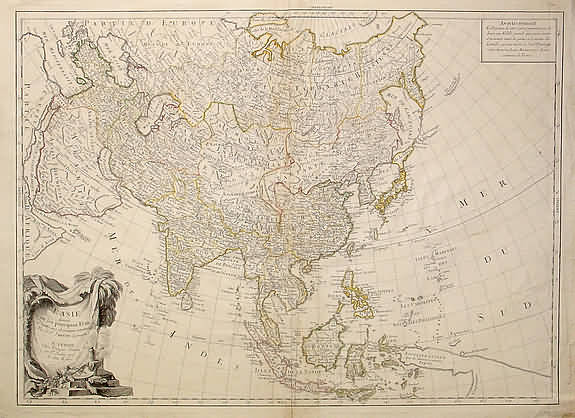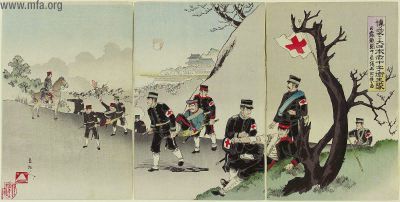One of the nice things about teaching modern China is that the Communists, as a text-centered party, wrote a lot of things. A lot of them have been translated into English which makes them easy to give to students. One of the things our department is currently doing is compiling a database of historical images that people can use while teaching. I have always used a lot of images while teaching (helps to keep them awake) and one of the things I find interesting about this is that lots of the images are pretty much useless if you are teaching at various different levels. For example, Kahn’s Monarchy in the Emperor’s eyes has a series of pictures of the Qianlong emperor in all of his various roles (warrior, Buddhist, martial-arts hero etc.) which work well in a class where you are talking about the Qing monarchy in a fairly fine-grained sort of way. They are not that useful for an East Asian survey, and even less useful for our gen ed. class. On the other hand, the easily google-able image of Chinese junks being blown up in the Opium War works well in the gen-ed class but is not really useful in a China class to make any point beyond “China lost the war.” (In general I like to use images that actually say something. Putting Zhang Zhidong’s portrait up on the wall does not accomplish much.) The bits and pieces of history that are easiest to find and use are those that serve a lot of purposes.
Mao and his texts are the best example of this. There is the Little Red Book. The Chinese Communist party of published his Selected Works. V. 1-5. Apparently a group of Indian Maoists collected another four volumes of Mao’s other works that were not part of the official cannon. So you have Red Book stuff that is quite cryptic to anyone who has not immersed themselves in Maoism, which works well if you have gotten yourself and your students to that point. Then there are the Selected Works things, which tend to be broader and more accessible. The additional volumes have a bunch of stuff that is by Mao, but really more May 4th than Maoist, as well as a lot of later speeches that would work well for fairly detailed work on post-49 China.
All of this Mao stuff was put on-line by the Communist party of Peru in 1999. Alas, some time in 2004 the site went down, and all of my syllabus links died. Thanks to the wayback machine, however, it is still possible to find all this stuff (along with the works of Chairman Gonzolo of the PCP.)





